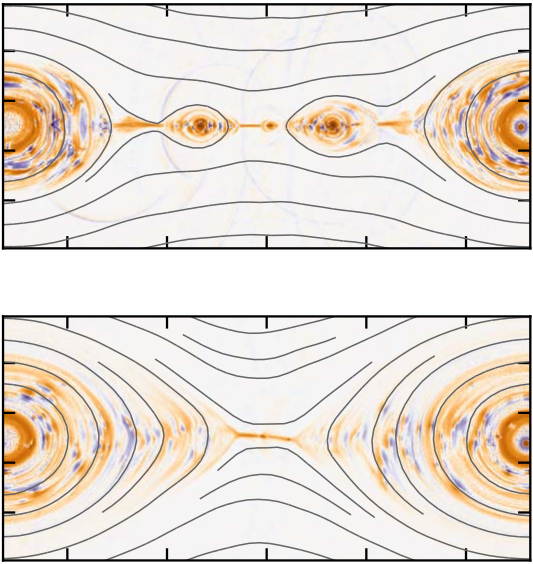Neutron Stars
X-ray Bursting Neutron Stars
Our Castro code and our simulation inputs files are open-source and freely available at the Castro GitHub.
Solving nuclear reactions on GPUs enabled accelerated nuclear astrophysics simulations using the Castro compressible hydrodynamics code. For more details about how we accelerated our nuclear reaction solver, see Nuclear Reactions.
My GPU work enabled our nuclear astrophysics collaboration to simulate detailed two and three-dimensional nuclear flames on neutron star surfaces!
Neutron stars in binary star systems can under certain astrophysical conditions accrete material from their companion star. In these cases, the neutron star’s atmosphere can undergo periodic thermonuclear runaway burning visible from Earth as a bright burst of X-rays.
By carefully modeling the X-ray burst physics, we hope to correlate observed X-ray bursts with properties of the unseen, super-dense neutron star core hiding below its atmosphere.

For details, see Zingale et al. (2019), Eiden et al. (2020), and Harpole et al. (2021).
Particle Acceleration in Neutron Star Environments
The WarpX code we used is open-source and freely available at the WarpX GitHub.
At LBL, I also collaborated with scientists who worked on electromagnetic modeling for particle accelerator physics. Together, we started a project to model relativistic particle acceleration from magnetic reconnection in rapidly rotating neutron star magnetospheres.
We worked with a talented intern, Eloise Yang, who set up these simulations in the WarpX electromagnetic particle-in-cell (PIC) code. After Eloise left LBL, postdoc Hannah Klion picked up the project. Our project’s first paper explored new advances in electromagnetic PIC solver methods and their utility for simulating charge acceleration from relativistic magnetic reconnection.

For details, see Klion et al. (2023).
This research sets the foundation for applying our numerical methods to simulate high-energy particle emission from not only magnetic reconnection but also cosmic ray acceleration in other astrophysical environments.